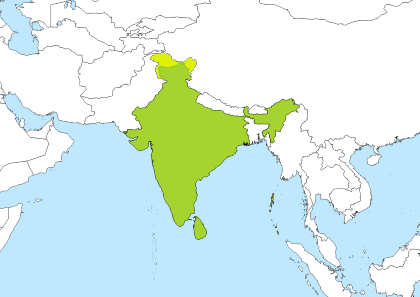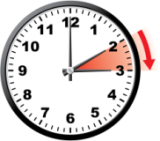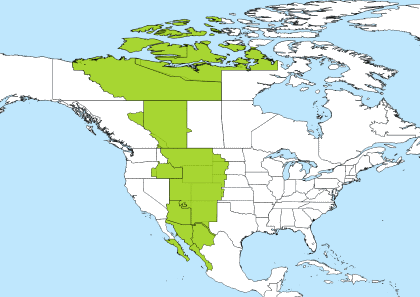IST to CST to PST to CT to MST
Time Difference
India Standard Time is 11 hours and 30 minutes ahead of Central Standard Time and 13 hours and 30 minutes ahead of Pacific Standard Time and 11 hours and 30 minutes ahead of Central Time and 12 hours and 30 minutes ahead of Mountain Standard Time
7:00 am07:00 in IST is 7:30 pm19:30 in CST and is 5:30 pm17:30 in PST and is 7:30 pm19:30 in CT and is 6:30 pm18:30 in MST
IST to CST call time
Best time for a conference call or a meeting is between 6:30pm-8:30pm in IST which corresponds to 7am-9am in CST
IST to PST call time
Best time for a conference call or a meeting is between 7:30pm-9:30pm in IST which corresponds to 6am-8am in PST
IST to CT call time
Best time for a conference call or a meeting is between 6:30pm-8:30pm in IST which corresponds to 7am-9am in CT
IST to MST call time
Best time for a conference call or a meeting is between 7pm-9pm in IST which corresponds to 6:30am-8:30am in MST
7:00 am07:00 India Standard Time (IST). Offset UTC +5:30 hours
7:30 pm19:30 Central Standard Time (CST). Offset UTC -6:00 hours
5:30 pm17:30 Pacific Standard Time (PST). Offset UTC -8:00 hours
7:30 pm19:30 Central Time (CT). Offset UTC -6:00 hours
6:30 pm18:30 Mountain Standard Time (MST). Offset UTC -7:00 hours
7:00 am07:00 IST / 7:30 pm19:30 CST / 5:30 pm17:30 PST / 7:30 pm19:30 CT / 6:30 pm18:30 MST
| IST | CST | PST | CT | MST |
|---|---|---|---|---|
| 12am (midnight) | 12:30 pm | 10:30 am | 12:30 pm | 11:30 am |
| 1am | 1:30 pm | 11:30 am | 1:30 pm | 12:30 pm |
| 2am | 2:30 pm | 12:30 pm | 2:30 pm | 1:30 pm |
| 3am | 3:30 pm | 1:30 pm | 3:30 pm | 2:30 pm |
| 4am | 4:30 pm | 2:30 pm | 4:30 pm | 3:30 pm |
| 5am | 5:30 pm | 3:30 pm | 5:30 pm | 4:30 pm |
| 6am | 6:30 pm | 4:30 pm | 6:30 pm | 5:30 pm |
| 7am | 7:30 pm | 5:30 pm | 7:30 pm | 6:30 pm |
| 8am | 8:30 pm | 6:30 pm | 8:30 pm | 7:30 pm |
| 9am | 9:30 pm | 7:30 pm | 9:30 pm | 8:30 pm |
| 10am | 10:30 pm | 8:30 pm | 10:30 pm | 9:30 pm |
| 11am | 11:30 pm | 9:30 pm | 11:30 pm | 10:30 pm |
| 12pm (noon) | 12:30 am | 10:30 pm | 12:30 am | 11:30 pm |
| 1pm | 1:30 am | 11:30 pm | 1:30 am | 12:30 am |
| 2pm | 2:30 am | 12:30 am | 2:30 am | 1:30 am |
| 3pm | 3:30 am | 1:30 am | 3:30 am | 2:30 am |
| 4pm | 4:30 am | 2:30 am | 4:30 am | 3:30 am |
| 5pm | 5:30 am | 3:30 am | 5:30 am | 4:30 am |
| 6pm | 6:30 am | 4:30 am | 6:30 am | 5:30 am |
| 7pm | 7:30 am | 5:30 am | 7:30 am | 6:30 am |
| 8pm | 8:30 am | 6:30 am | 8:30 am | 7:30 am |
| 9pm | 9:30 am | 7:30 am | 9:30 am | 8:30 am |
| 10pm | 10:30 am | 8:30 am | 10:30 am | 9:30 am |
| 11pm | 11:30 am | 9:30 am | 11:30 am | 10:30 am |
| 0:00 | 12:30 | 10:30 | 12:30 | 11:30 |
| 1:00 | 13:30 | 11:30 | 13:30 | 12:30 |
| 2:00 | 14:30 | 12:30 | 14:30 | 13:30 |
| 3:00 | 15:30 | 13:30 | 15:30 | 14:30 |
| 4:00 | 16:30 | 14:30 | 16:30 | 15:30 |
| 5:00 | 17:30 | 15:30 | 17:30 | 16:30 |
| 6:00 | 18:30 | 16:30 | 18:30 | 17:30 |
| 7:00 | 19:30 | 17:30 | 19:30 | 18:30 |
| 8:00 | 20:30 | 18:30 | 20:30 | 19:30 |
| 9:00 | 21:30 | 19:30 | 21:30 | 20:30 |
| 10:00 | 22:30 | 20:30 | 22:30 | 21:30 |
| 11:00 | 23:30 | 21:30 | 23:30 | 22:30 |
| 12:00 | 0:30 | 22:30 | 0:30 | 23:30 |
| 13:00 | 1:30 | 23:30 | 1:30 | 0:30 |
| 14:00 | 2:30 | 0:30 | 2:30 | 1:30 |
| 15:00 | 3:30 | 1:30 | 3:30 | 2:30 |
| 16:00 | 4:30 | 2:30 | 4:30 | 3:30 |
| 17:00 | 5:30 | 3:30 | 5:30 | 4:30 |
| 18:00 | 6:30 | 4:30 | 6:30 | 5:30 |
| 19:00 | 7:30 | 5:30 | 7:30 | 6:30 |
| 20:00 | 8:30 | 6:30 | 8:30 | 7:30 |
| 21:00 | 9:30 | 7:30 | 9:30 | 8:30 |
| 22:00 | 10:30 | 8:30 | 10:30 | 9:30 |
| 23:00 | 11:30 | 9:30 | 11:30 | 10:30 |
India Standard Time
Offset: IST is 5 hours and 30 minutes ahead Greenwich Mean Time (GMT) and is used in Asia
Countries: It is used in following countries: India
Principal Cities: The largest city in the IST timezone is Mumbai from India with population about 12.692 million people. Other major cities in the area are Delhi, Bangalore, Kolkata, Chennai
Daylight Saving: India Standard Time (IST) is not adjusted for daylight saving therefore IST remains the same through out the year. This means, unlike some time zones where the clock is set forward by one hour every summer and backward by one hour during winter to adjust for daylight saving, India Standard Time remains the same

IST representations, usage and related time zones
- +0530 - basic
- +05:30 - extended
- +0530 - sign character (+) followed by a four digit time providing hours (05) and minutes (30) of the offset. Indicates five hour and thirty minutes time differences to the east of the zero meridian.
- Asia/Calcutta
- Asia/Kolkata
- India Standard Time - UTC +5:30
- Irish Standard Time - UTC +1
- Israel Standard Time - UTC +2
- Irkutsk Standard Time - UTC +8
Central Standard Time
Offset: CST is 6 hours behind Greenwich Mean Time (GMT) and is used in North America
Countries: It is used in following countries: Belize, Canada, Costa Rica, Guatemala, Honduras, Mexico, Nicaragua, El Salvador, United States
Principal Cities: The largest city in the CST timezone is Mexico City from Mexico with population about 12.294 million people. Other major cities in the area are Chicago, Houston, Iztapalapa, Ecatepec
French: HNC - Heure Normale du Centre
Spanish: CT - Tiempo Central Estándar, CT - Zona Centro

Daylight Saving: This is a standard timezone, however during summer some places switch clocks for one hour forward when daylight saving comes into effect and observe Central Daylight Time (CDT).
 Start: Central Standard Time (CST) started on Sunday, November 2, 2025 at 2:00 am local time and clocks were set one hour back to Sunday, November 2, 2025, 1:00 am. Standard time starts annually the on first Sunday of November.
Start: Central Standard Time (CST) started on Sunday, November 2, 2025 at 2:00 am local time and clocks were set one hour back to Sunday, November 2, 2025, 1:00 am. Standard time starts annually the on first Sunday of November.
 End: Central Standard Time (CST) ends on Sunday, March 8, 2026 at 2:00 am local time and clocks are set one hour forward to Sunday, March 8, 2026, 3:00 am local daylight time instead. Standard time starts annually the on second Sunday of March.
End: Central Standard Time (CST) ends on Sunday, March 8, 2026 at 2:00 am local time and clocks are set one hour forward to Sunday, March 8, 2026, 3:00 am local daylight time instead. Standard time starts annually the on second Sunday of March.
CST representations, usage and related time zones
- -06 - basic short
- -0600 - basic
- -06:00 - extended
- -0600 - sign character (-) followed by a four digit time providing hours (06) and minutes (00) of the offset. Indicates six hour and zero minutes time differences to the west of the zero meridian.
- Sierra - Military abbreviation for CST
- S - short form of 'Sierra'
- America/Bahia_Banderas
- America/Belize
- America/Chicago
- America/Chihuahua
- America/Costa_Rica
- America/El_Salvador
- America/Guatemala
- America/Indiana/Knox
- America/Indiana/Tell_City
- America/Knox_IN
- America/Managua
- America/Matamoros
- America/Menominee
- America/Merida
- America/Mexico_City
- America/Monterrey
- America/North_Dakota/Beulah
- America/North_Dakota/Center
- America/North_Dakota/New_Salem
- America/Ojinaga
- America/Rainy_River
- America/Rankin_Inlet
- America/Regina
- America/Resolute
- America/Swift_Current
- America/Tegucigalpa
- America/Winnipeg
- CST6CDT
- Canada/Central
- Canada/Saskatchewan
- Mexico/General
- US/Central
- US/Indiana-Starke
- Central Standard Time - UTC -6
- China Standard Time - UTC +8
- Cuba Standard Time - UTC -5
- Colombia Standard Time - UTC -5
- CST - Central Standard Time
- CT - Central Time
- MDT - Mountain Daylight Time
- EAST - Easter Island Standard Time
- GALT - Galapagos Time
- S - Sierra Time Zone
Pacific Standard Time
Offset: PST is 8 hours behind Greenwich Mean Time (GMT) and is used in North America
Countries: It is used in following countries: Canada, Mexico, United States
Principal Cities: The largest city in the PST timezone is Los Angeles from USA with population about 3.793 million people. Other major cities in the area are Vancouver, Tijuana, San Diego, San Jose
French: HNP - Heure Normale du Pacifique
Spanish: PT - Tiempo del Pacífico, PT - Zona Noroeste

Daylight Saving: This is a standard timezone, however during summer some places switch clocks for one hour forward when daylight saving comes into effect and observe Pacific Daylight Time (PDT).
 Start: Pacific Standard Time (PST) started on Sunday, November 2, 2025 at 2:00 am local time and clocks were set one hour back to Sunday, November 2, 2025, 1:00 am. Standard time starts annually the on first Sunday of November.
Start: Pacific Standard Time (PST) started on Sunday, November 2, 2025 at 2:00 am local time and clocks were set one hour back to Sunday, November 2, 2025, 1:00 am. Standard time starts annually the on first Sunday of November.
 End: Pacific Standard Time (PST) ends on Sunday, March 8, 2026 at 2:00 am local time and clocks are set one hour forward to Sunday, March 8, 2026, 3:00 am local daylight time instead. Standard time starts annually the on second Sunday of March.
End: Pacific Standard Time (PST) ends on Sunday, March 8, 2026 at 2:00 am local time and clocks are set one hour forward to Sunday, March 8, 2026, 3:00 am local daylight time instead. Standard time starts annually the on second Sunday of March.
PST representations, usage and related time zones
- -08 - basic short
- -0800 - basic
- -08:00 - extended
- -0800 - sign character (-) followed by a four digit time providing hours (08) and minutes (00) of the offset. Indicates eight hour and zero minutes time differences to the west of the zero meridian.
- Uniform - Military abbreviation for PST
- U - short form of 'Uniform'
- America/Ensenada
- America/Los_Angeles
- America/Santa_Isabel
- America/Tijuana
- America/Vancouver
- Canada/Pacific
- Mexico/BajaNorte
- PST8PDT
- US/Pacific
- Pacific Standard Time - UTC -8
- Pitcairn Standard Time - UTC -8
- Peru Standard Time - UTC -5
- AKDT - Alaska Daylight Time
- PST - Pacific Standard Time
- PT - Pacific Time
- PST - Pitcairn Standard Time
- U - Uniform Time Zone
Central Time
Central Time (PT) is a general term used to describe the areas that observe either the Central Standard Time (CST) or Central Daylight Time (CDT) in the United States and Canada. CT is not static but switches between CDT and CST.
Territories observing the time zone are primarily in North and Central America. It runs through several Mexican and U.S. states, as well as several Canadian provinces and Central American countries.
Countries: It is used in following countries: Belize, Canada, Costa Rica, Guatemala, Honduras, Mexico, Nicaragua, El Salvador, United States.
Principal Cities: The largest city in the CST timezone is Mexico City from Mexico with population about 12.294 million people. Other major cities in the area are Chicago, Houston, Iztapalapa, Ecatepec.
French: HNC - Heure Normale du Centre
Spanish: CT - Tiempo Central Estándar, CT - Zona Centro
Central Time (PT) is a general term used to describe the areas that observe either the Central Standard Time (CST) or Central Daylight Time (CDT) in the United States and Canada. CT is not static but switches between CDT and CST.
Territories observing the time zone are primarily in North and Central America. It runs through several Mexican and U.S. states, as well as several Canadian provinces and Central American countries.
Countries: It is used in following countries: Belize, Canada, Costa Rica, Guatemala, Honduras, Mexico, Nicaragua, El Salvador, United States.
Principal Cities: The largest city in the CST timezone is Mexico City from Mexico with population about 12.294 million people. Other major cities in the area are Chicago, Houston, Iztapalapa, Ecatepec.
French: HNC - Heure Normale du Centre
Spanish: CT - Tiempo Central Estándar, CT - Zona Centro
CT representations, usage and related time zones
- -06 - basic short
- -0600 - basic
- -06:00 - extended
- -0600 - sign character (-) followed by a four digit time providing hours (06) and minutes (00) of the offset. Indicates six hour and zero minutes time differences to the west of the zero meridian.
- Sierra - Military abbreviation for CT
- S - short form of 'Sierra'
- Central Time - UTC -6
- Chuuk Time - UTC +10
- CST - Central Standard Time
- CT - Central Time
- MDT - Mountain Daylight Time
- EAST - Easter Island Standard Time
- GALT - Galapagos Time
- S - Sierra Time Zone
Mountain Standard Time
Offset: MST is 7 hours behind Greenwich Mean Time (GMT) and is used in North America
Countries: It is used in following countries: Canada, Mexico, United States
Principal Cities: The largest city in the MST timezone is Phoenix from USA with population about 1.446 million people. Other major cities in the area are Calgary, Edmonton, El Paso, Denver
French: HNR - Heure Normale des Rocheuses
Spanish: MT - Zona Pacífico

Daylight Saving: This is a standard timezone, however during summer some places switch clocks for one hour forward when daylight saving comes into effect and observe Mountain Daylight Time (MDT).
 Start: Mountain Standard Time (MST) started on Sunday, November 2, 2025 at 2:00 am local time and clocks were set one hour back to Sunday, November 2, 2025, 1:00 am. Standard time starts annually the on first Sunday of November.
Start: Mountain Standard Time (MST) started on Sunday, November 2, 2025 at 2:00 am local time and clocks were set one hour back to Sunday, November 2, 2025, 1:00 am. Standard time starts annually the on first Sunday of November.
 End: Mountain Standard Time (MST) ends on Sunday, March 8, 2026 at 2:00 am local time and clocks are set one hour forward to Sunday, March 8, 2026, 3:00 am local daylight time instead. Standard time starts annually the on second Sunday of March.
End: Mountain Standard Time (MST) ends on Sunday, March 8, 2026 at 2:00 am local time and clocks are set one hour forward to Sunday, March 8, 2026, 3:00 am local daylight time instead. Standard time starts annually the on second Sunday of March.
MST representations, usage and related time zones
- -07 - basic short
- -0700 - basic
- -07:00 - extended
- -0700 - sign character (-) followed by a four digit time providing hours (07) and minutes (00) of the offset. Indicates seven hour and zero minutes time differences to the west of the zero meridian.
- Tango - Military abbreviation for MST
- T - short form of 'Tango'
- America/Boise
- America/Cambridge_Bay
- America/Ciudad_Juarez
- America/Creston
- America/Dawson
- America/Dawson_Creek
- America/Denver
- America/Edmonton
- America/Fort_Nelson
- America/Hermosillo
- America/Inuvik
- America/Mazatlan
- America/Phoenix
- America/Shiprock
- America/Whitehorse
- America/Yellowknife
- Canada/Mountain
- Canada/Yukon
- MST
- MST7MDT
- Mexico/BajaSur
- Navajo
- US/Arizona
- US/Mountain
- Mountain Standard Time - UTC -7
- Mauritius Standard Time - UTC +4
- Moscow Standard Time - UTC +3
- MST - Mountain Standard Time
- PDT - Pacific Daylight Time
- YST - Yukon Standard Time
- T - Tango Time Zone
